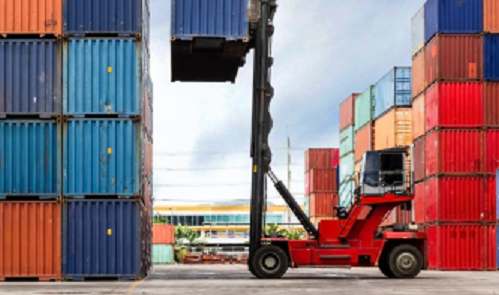
-
Average global container prices rose 5.4% month-on-month
-
But in China, average container prices and leasing rates continue to slip
-
Decline in consumer demand for goods not expected to impact change in container prices and rates in future
-
Expected surge of containers onto the transpacific passage could drive up vessel use and spot rates on the route, especially with the peak season approaching
-
Major congestions reported in Los Angeles and Houston in the US, while Rotterdam is full and Hamburg is catching up, Container xChange says
For the first time this year in May, average global container prices rose 5.4% month-on-month (from US$2,207 in April to $2,330) for 20-foot dry cargo containers and by 15% (from $3,800 to $4,410) for 40-ft high cube boxes, reports a logistics technology company.
However, the average container prices and leasing rates continue to decline in China even as the country’s and the world’s biggest port city, Shanghai, reopens after a massive two months of COVID-related lockdown, Hamburg-based Container xChange said.
Container xChange chief executive and co-founder Christian Roeloffs said this is so because not only Shanghai was locked down; “right now, Beijing and its biggest harbor, Tianjin, are still in a lockdown. All cities are so interlinked that it influences the whole of China.”
For instance, he said, Shanghai is the main hub producing car parts and Shenzhen is the assembly center. When Shanghai could not transport parts to Shenzhen, nothing could get assembled, thus exports out of Shenzhen also experienced a slowdown.
“We expect a surge of containers onto the transpacific, leading to higher utilization of vessels on this route. We could see a surge in spot rates especially with the upcoming peak season,” writes Roeloffs in the monthly container logistics report titled “Where are all the containers” published by Container xChange.
Container xChange provides technology infrastructure for container logistics players.
Roeloffs said there are major congestions in Los Angeles and Houston, while depots in Rotterdam are also full and Hamburg is catching up. He said pick-up charges in China had declined in the past months because there had been a lack of demand for containers there.
He said global container prices should increase in the short term because pent-up demand would shoot up, especially with the peak season coming up. “However, in the mid to long term, we expect container prices to go down, container availability to go up and container turnaround times to normalize… (as) the supply chain disruptions ease,” said Roeloffs.
He dismissed Goldman Sachs’ assumption that goods consumption of about 5% higher than pre-pandemic levels, but down from a peak gap of 15%, was fuelling the container prices.
Roeloffs said the demand side was never really the massive driver of the increased rates.
“Owing to the supply chain shocks, the containers just took much longer than before and, hence, there was just not enough supply of containers, which coupled with a little bit of an increase in demand and led to this situation that we faced. So, I don’t think that slight reduction in demand will be a massive driver of market changes but, of course, it will contribute,” he said.
He said consumer demand wasn’t the biggest driver of the market destabilization, but, rather, “a sort of supply shock and that there were just not enough boxes to go around and because they took longer to move from A to B.”
The report said there will be a gradual increase in demand for smaller vessels meant for smaller trade networks due to an expected increase in more complex networks with more stops and longer turnaround times.
“Supply chain routes and transhipment lanes are being reimagined to build resilience and to lower the reliance on bigger trade blocks. So, in a way, diversification of trade blocks to diversify the supply chain risks,” Roeloffs said.
“For instance, this could mean more stops in Southeast Asia, then all of this goes into Singapore or Hong Kong in a major hub and then re-exported across, for example, the Pacific. That again, not only increases intraregional traffic, but it also increases the importance of these transit hubs. And then, lastly, I think it will increase the importance of smaller players in the market.”




